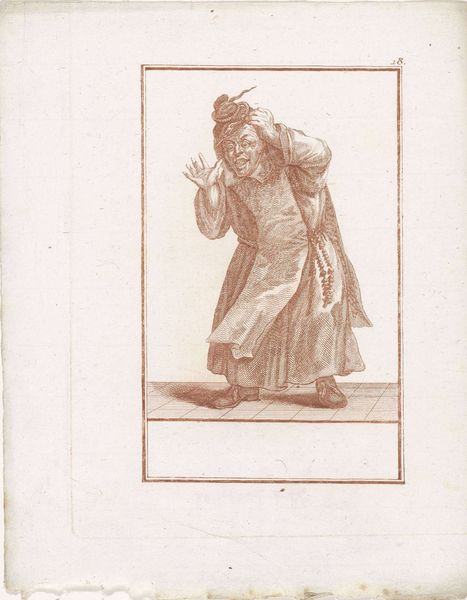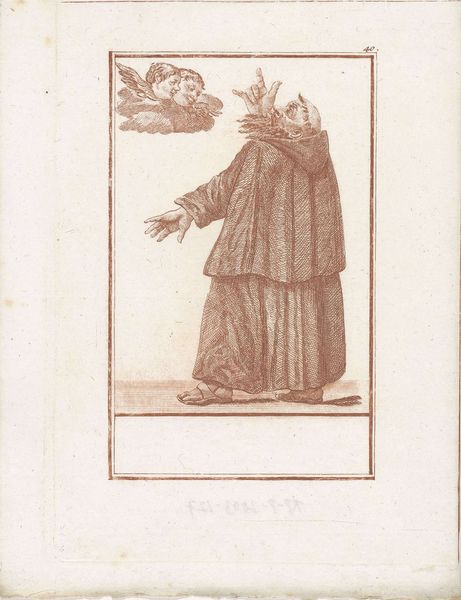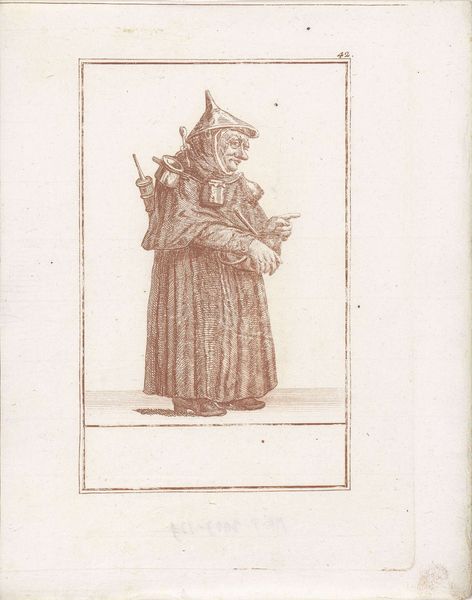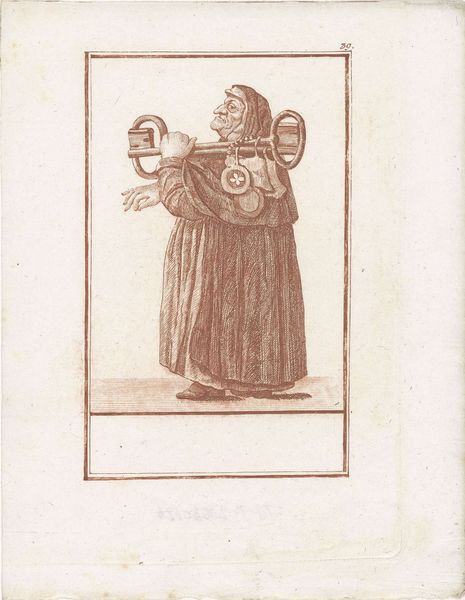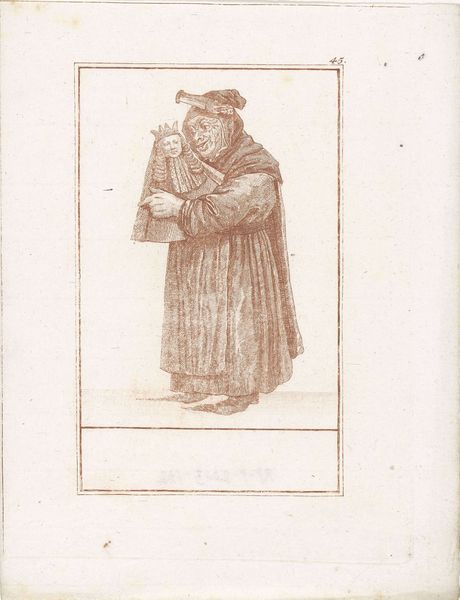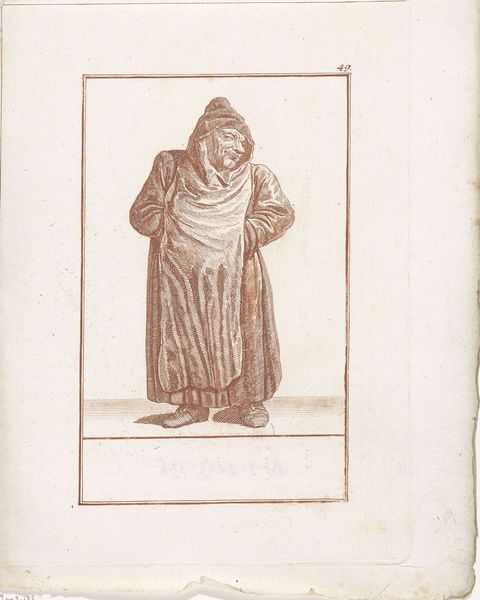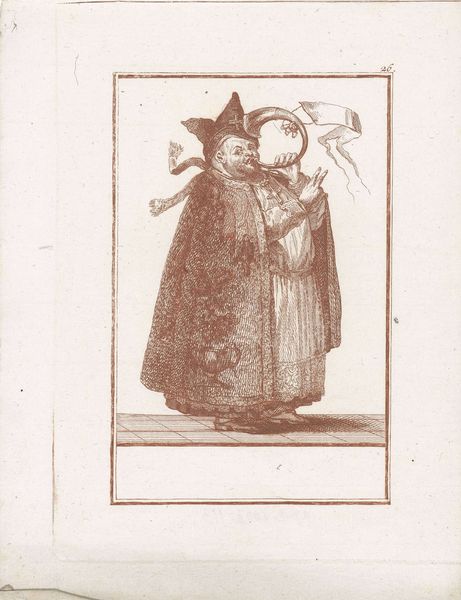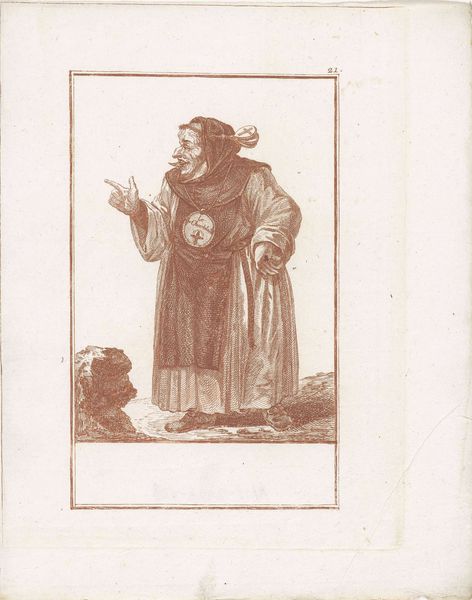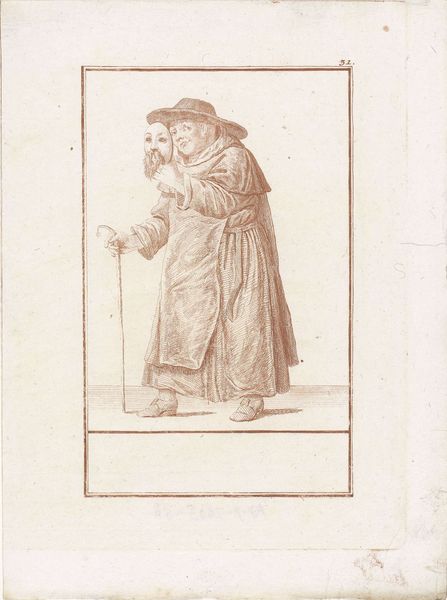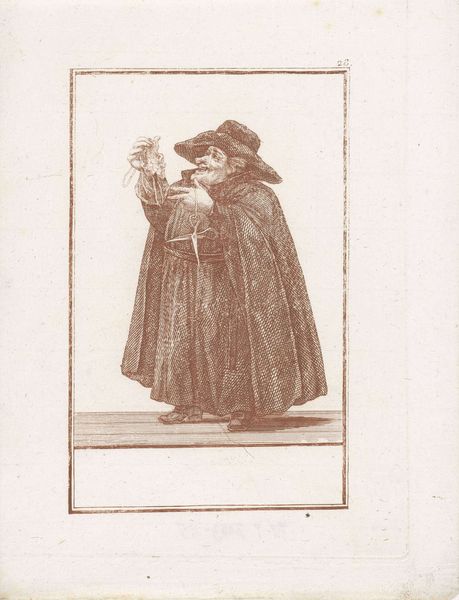
engraving
#
toned paper
#
baroque
#
old engraving style
#
figuration
#
genre-painting
#
engraving
Dimensions: height 233 mm, width 183 mm
Copyright: Rijks Museum: Open Domain
Curator: Here we have a look at "Monnik met vuur in de ene, water in de andere hand", an engraving made in 1724 by Jacob Gole, currently housed here at the Rijksmuseum. What strikes you first? Editor: It’s the immediate visual opposition, obviously. This monk figure simultaneously holding fire and water! The contrasting elements really create an air of tense mystery, wouldn’t you say? A study in symbolic contradictions, definitely, but… on what basis? Curator: Well, given it’s an engraving, the process would have started with a metal plate, likely copper, carefully etched with lines to create the image we see printed on this toned paper. Gole, being a renowned engraver, probably used various burins to achieve that precise detailing we see in the monk's robe and facial features. Note the specific way he articulated the face...the details indicate time invested in the labor. Editor: Right. It does have an immediate narrative pull! But the real key to understanding the piece lies in understanding the meaning imbued into those opposed elemental symbols, surely? The fire could represent purification, divine light, or even the fires of hell, while water speaks to baptism, cleansing, or the chaos of emotions. The character looks, for want of a better phrase, decidedly weird! Is this the artist’s interpretation of mental torment, or even duality of purpose? Curator: Consider also the socioeconomic context. In the Baroque era, printmaking like this allowed for relatively inexpensive reproduction of images, disseminating ideas widely. This image might have served as a satirical commentary on religious hypocrisy. Think about that contrast! Gole worked with the reproductive press extensively, so this suggests to me that the labor needed to complete this may be a form of critique or a vehicle of social message to those with whom he was circulating this print. Editor: Oh, certainly. And don’t forget the lasting cultural impact of alchemy too. Balancing opposing forces to achieve some kind of elevated knowledge or personal growth. Perhaps the figure embodies humanity struggling with inner conflict...torn between earthly passions (fire) and spiritual yearning (water). I would need to investigate that area. Curator: Ultimately, understanding Gole's working practices and the role printmaking had in Baroque society allows us a more tangible way to ground such symbolic speculations. Editor: Precisely! And viewing those elemental symbols, charged as they are, helps enrich and root our comprehension of not only Baroque period works, but our own personal understandings of human conditions too. Thank you. Curator: Indeed. The materiality meeting metaphor can certainly offer us further contextual and symbolic depths to these elements, that is without question!
Comments
No comments
Be the first to comment and join the conversation on the ultimate creative platform.

